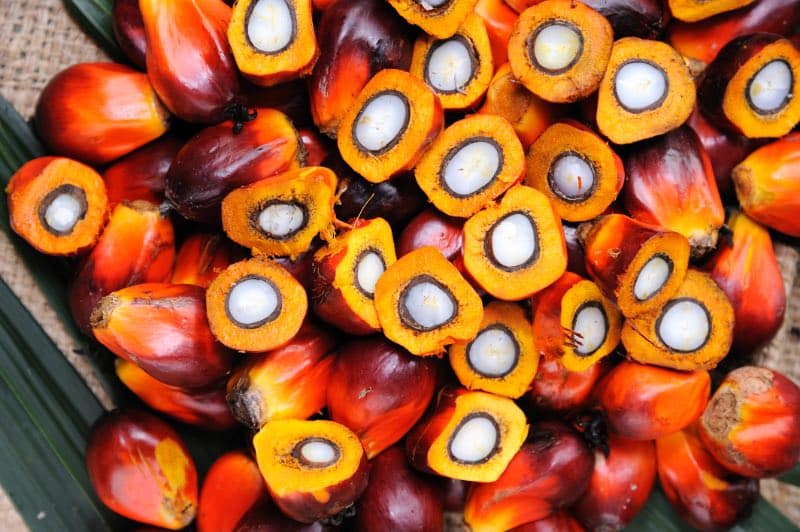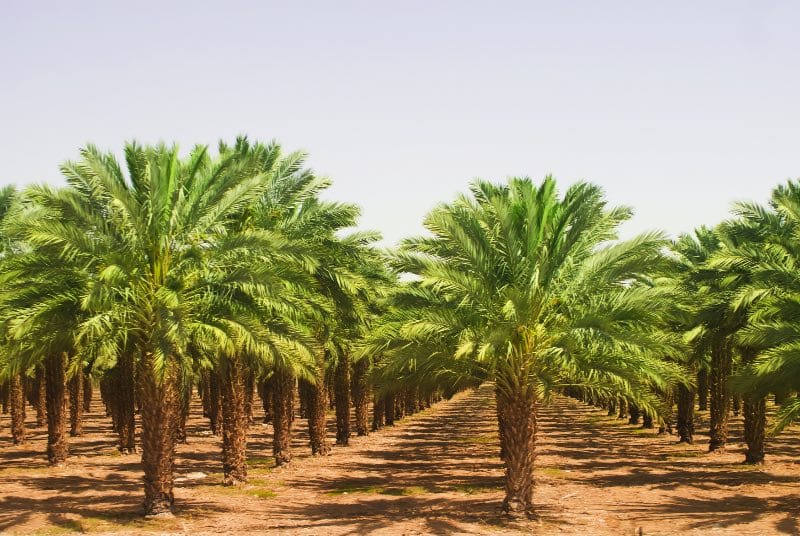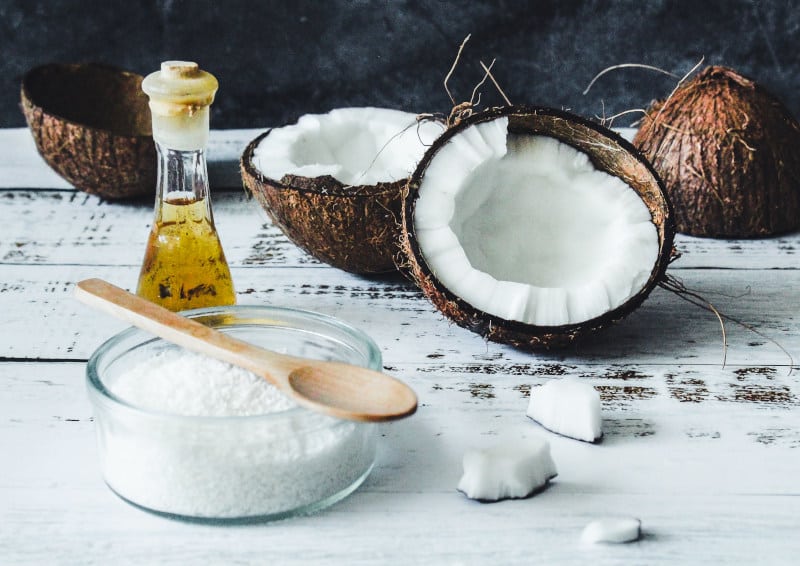5 Sustainable Palm Oil Alternatives To Go Palm Oil Free
According to Statista, the global production of palm oil was around 73 million metric tons in 2020 and 2021. If you take a walk around your local grocery store and look at the ingredients on food products, you’ll quickly start to see how common of an ingredient palm oil is.
Palm oil is used in a wide range of products and is loved by people across the globe. It is utilized in everything from confectionery to construction. However, it has a high environmental cost. This popular oil is the cause of a large amount of deforestation and a driver of biodiversity loss.
Given the negative impact producing palm oil is having on our Earth, it is vital we go palm oil free and start looking for palm oil alternatives. Continue reading to learn more about why palm oil is problematic for the planet and how you can break up with palm oil.
What Is Palm Oil Used For?
Palm oil is the most consumed vegetable oil on Earth and is found in numerous packaged products sold in the supermarket. Only the tropics support the oil palm tree’s growth. The tree produces high-quality oil present in many food products, cosmetics, and detergents.
You’re probably wondering why palm oil is just about everywhere. This is because of how versatile the oil is and its many functions and properties.

To name a few, palm oil is resistant to oxidation, so it can increase product shelf-life. In addition, it is semi-solid at room temperature, which means it helps spreads remain spreadable.
Moreover, palm oil is odorless and colorless, which means it will not alter the smell or look of food products. On another note, palm oil remains stable at high temperatures, which gives fried products a crunchy and crispy texture.
Not to mention palm oil is a very productive crop that offers a much greater yield at a lower cost of production than other vegetable oils. The global demand and production for palm oil are relatively rapid, with plantations spreading across Latin America, Asia, and Africa.
Why Is Palm Oil Bad?
The expansion of palm oil production is harming the planet. Increased demand is destroying forests such as those in Malaysia and Indonesia. These forests house critical habitats and many endangered species. In addition, these forests are a lifeline for some indigenous tribes and communities.
To put it into perspective, the Global Forest Watch has reported that Indonesia lost 25.6 million hectares of tree cover between 2001 and 2018. This area is almost as big as New Zealand.

The uncontrolled clearing of these forests to produce palm oil plantations threatens biodiversity. These plantations have been connected to declining species such as elephants, rhinos, tigers, and orangutans.
When palm trees grow higher, it gets more challenging to collect their seeds, and the fruit becomes more difficult. Therefore, palm oil producers clean down rainforests and palm trees to collect the oil and plant new trees to make more. This reduces the planet’s ability to store carbon – one of the reasons why trees are important – leaving the Earth much more vulnerable to climate change and global warming.
This cleaning can also cause environmental pollution due to the land and forest fires generated. Peatland fires are a common method to prep the land for new palm trees. Unfortunately, these fires cause toxic haze and smoke, which threaten the planet and impact the health of people living locally.
Palm oil is also used to fill up diesel vehicles’ tanks in Europe. It is used as a biofuel or, in other words, a fuel additive.
Due to these effects, governments and businesses across the globe have been placed under significant pressure to find alternatives. People are asking that it be produced in a responsible manner that respects the communities and environment where it is cultivated. In saying that, replacing what is considered to be a miracle product is not easy.
Alternatives To Palm Oil
Now that you know how palm oil is problematic for the planet, you are probably wondering about alternatives. Ultimately what people try to find when looking for other options are oils that are similar in their chemical composition.
Luckily, there are some great options that are almost identical to the beloved palm oil. Below are some palm oil alternatives.
1. Coconut Oil
The first of our palm oil alternatives is coconut oil. It is a popular alternative to palm oil and has been found to be much better for the planet. Coconut oil grows fast and is an affordable option. In addition, it has a lot of health benefits.

The main downside to coconut oil is that it grows in tropical locations. Therefore, it would quickly become unsustainable if it became a cash crop and were considered the new palm oil. Therefore, the best thing to do is use coconut oil as a replacement in moderation in addition to the other oil alternatives on this list.
2. Heterotrophic Algal Oil
This oil is cultivated from a specific form of algae known as chlorella. It requires less growing space and shares a similar chemical composition to palm oil. However, it does still have drawbacks. One big one is its high cost, and the second is how unsustainable the algae’s food is.
The Heterotrophic Algal Oil requires significant sugar to grow. This is a separate issue as only 4 percent of the world’s sugar cane is considered environmentally friendly. Other forms of algae may work for this purpose. In saying that, these are the types that are currently being utilised to create biodiesel.
3. Rapeseed Oil And Sunflower Seed Oil
Another one of the brilliant palm oil alternatives out there is rapeseed oil mixed with sunflower seed oil. Combining the two helps to match the chemical composition of palm oil. Moreover, these crops do not have a significant environmental impact like palm oil concerning deforestation.
However, it should be noted that they require a lot of water and land to grow. It is also essential to research the companies producing these oils to ensure they are not harming ecosystem types by creating the products. Ultimately, this mixture is a good choice, but their high resource use must be considered.
4. Vegetable Margarine
Another good alternative to palm oil is vegetable margarine. For those unfamiliar with vegetable margarine, it is a spread commonly used as a substitute for butter. It is made of a mix of oils like canola, sunflower, and rapeseed.
Vegetable margarine is probably one of the most accessible options, too, since it is affordable and available in most grocery stores across the globe. In addition to that, it is a healthy option, too, being rich in omega-3 fatty acids, which are great for your heart.
5. Canola Oil
Why not try canola oil if the other palm oil alternatives do not appeal to you? Similarly to vegetable margarine, it is rich in omega-3 fatty acids and omega-6 fatty acids. It has very low levels of saturated fats, making it a good choice for your health.
It has a mild flavour that is relatively neutral, meaning it won’t alter the taste of your dishes. It is almost identical to palm oil and is very affordable. Canola oil can be found in large bottles in many grocery stores too.
Which Everyday Products Contain Palm Oil?
As mentioned previously, palm oil is present in many everyday products. Some of these include the following:
- Lipsticks: Palm oil is used in lipsticks to achieve a smooth formula with good colour intensity.
- Shampoo and soap: Palm oil is added to shampoo and soap to help create a lather. This lather helps to remove oil and dirt from the hair and skin.
- Bread: Many breads will include palm oil as an ingredient. This is mainly because it doesn’t melt at room temperature and is an affordable choice.
- Peanut butter: Palm oil has a neutral flavor which is why it is used in peanut butter to provide a creamier texture that is easier to spread.
- Instant noodles: Palm oil is added to instant noodles to pre-cook them.
- Pizza: Palm oil is added to pizzas to maintain the doughy texture and prevent toppings from sticking together.
- Ice cream: The controversial oil is added to many ice creams because it thickens the consistency. This helps it to melt at a much slower rate.
- Biscuits and cookies: You will likely discover palm oil in many biscuits and cookies. It is added to help maintain their crunchy yet soft consistency.
- Margarine and butter: Similarly to peanut butter, palm oil is used in many butter and margarine food products. It is added to preserve the food for longer but also to help them spread butter and maintain their texture.
- Chocolate: Palm oil is also regularly found in chocolate products. It is added to chocolate to help maintain its smooth texture. In addition, the oil helps maintain its shiny appearance.
- Detergent: Many cleaning detergent products will contain palm oil. It is added to these products for the same reasons as soaps and shampoos.
Many other products contain palm oil due to its versatility. As a result, if you are planning to go palm oil free, you must check the ingredients list on all products.
How to Avoid Products That Contain Palm Oil?
Knowing the harmful effects palm oil has on the planet, we should try to limit our consumption of this oil. The problem people face when trying to do so is that many products that contain palm oil are not clearly labelled.
In other words, usually, it does not say ‘Palm Oil’ on the ingredients list. Palm oil and its derivatives have many names, typically included on product labels. Here are some of those:
- Vegetable fat
- Vegetable oil
- Palm fruit oil
- Palm kernel oil
- Palm kernel
- Palmitate
- Palmate
- Palmolein
- Stearate
- Glyceryl
- Stearic acid
- Palmitic acid
- Sodium kernelate
- Sodium palm kernelate
- Hydrated palm glycerides
- Etyl palmitate
- Palmityl alcohol
- Octyl palmitate
If you are trying to avoid buying products containing palm oil, check the ingredient lists of all products for any of these names. You don’t have to go cold turkey initially; work slowly at reducing your consumption of palm oil.
In other words, try to replace some products with palm oil alternatives and search for other palm oil-free products. In addition, some food products in grocery stores are made with certified sustainable palm oil. To determine if a product is made using eco-friendly palm oil, you should check for an RSPO label.

This label gives consumers confidence that the palm oil was produced in an environmentally and socially responsible way.
If you do not find one of these labels on a product, contact the company to ask them how they source their palm oil and advise them to use certified sustainable palm oil. This is one significant action you can take to support a more responsible palm oil industry.
Ultimately, it is all about researching companies and checking ingredient lists. Another brilliant way to reduce your consumption of palm oil is to replace snacks and beauty products with homemade and DIY versions. When you make your own products, you can control what goes into them.
Remember also that products that have ‘Vegan’, ‘Natural, ‘Green’, ‘Organic’, or ‘Cruelty-Free’ written on them could still contain palm oil.
The best thing you can do is slowly breaking up with palm oil and support alternatives and sustainable palm oil. In addition, avoid brands that engage in greenwashing by researching products and brands.
Ready To Start Using Palm Oil Alternatives?
Palm oil is a versatile oil that seems like it is in just about every product. The problem is that it continues to be a significant driver of deforestation of some of the world’s most biodiverse forests.
Palm oil production is destroying the habitats of already endangered species such as the Sumatran Rhino, the Pygmy Elephant, and the Orangutan. Therefore, we need to work on going palm oil free.
To do this, we must switch to sustainable palm oil alternatives like the ones listed in this article. In addition, check ingredient lists, research brands, and urge them to use sustainable palm oil.